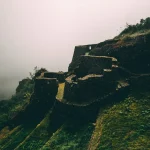
Uncovering the Mysteries of Europe's Majestic Castles: A Journey of Exploration

Introduction to Europe’s Majestic Castles
Europe is home to some of the most majestic and awe-inspiring castles in the world. These ancient structures have captured the imaginations of people from all over the globe for centuries. From fairy tale-like fortresses perched on hilltops to grand palaces that once housed kings and queens, Europe’s castles are a testament to the continent’s rich history and architectural prowess.
The allure of Europe’s castles lies in their ability to transport visitors back in time. These magnificent structures serve as a window into the past, allowing us to glimpse into a world of knights, princesses, and epic battles. They are a tangible link to a bygone era, and their grandeur and beauty continue to captivate people of all ages.
The History and Evolution of Castle Architecture in Europe
The origins of castle architecture in Europe can be traced back to ancient times. The earliest fortifications were simple structures made of wood or stone, designed primarily for defense. As time went on, castle architecture became more sophisticated, incorporating elements such as moats, drawbridges, and fortified walls.
Different regions in Europe developed their own unique styles of castle architecture. In France, for example, the castles were characterized by their elegant design and ornate decorations. In Germany, castles were often built on hilltops for strategic purposes and featured thick walls and imposing towers.
Over the centuries, castle architecture evolved to meet the changing needs of society. With advancements in technology and warfare, castles became more fortified and complex. The introduction of gunpowder, for instance, led to the development of thicker walls and stronger defenses.
The Role of Castles in Medieval Europe
During the medieval period, castles played a crucial role in European society. They served as both defensive structures and symbols of power and wealth. Castles were often built by feudal lords and served as their residences, as well as centers of administration and governance.
In addition to their defensive and administrative functions, castles also had a significant impact on medieval warfare. Their strategic locations and fortified walls made them formidable strongholds, providing protection for the lord and his subjects during times of conflict. Castles were often the focal point of sieges and battles, and their capture or defense could have far-reaching consequences.
The social and political significance of castles cannot be overstated. They were not only symbols of power but also centers of social life. Castles were often the site of grand feasts, tournaments, and other festivities. They were also places where important decisions were made and where justice was administered.
Famous Castles and their Legends: A Look at Europe’s Most Iconic Structures
Europe is home to countless famous castles, each with its own unique history and legends. One such castle is Neuschwanstein Castle in Germany, which is said to have inspired Walt Disney’s Sleeping Beauty Castle. This fairy tale-like fortress attracts millions of visitors each year with its stunning architecture and breathtaking views.
Another iconic castle is Edinburgh Castle in Scotland. Perched atop an extinct volcano, this ancient fortress has witnessed centuries of history and is said to be haunted by various ghosts. It offers visitors a glimpse into Scotland’s rich heritage and offers panoramic views of the city below.
In France, the Palace of Versailles is a testament to the opulence and grandeur of the French monarchy. This sprawling palace was the residence of Louis XIV and served as the seat of power for over a century. Its stunning gardens, ornate interiors, and rich history make it one of Europe’s most visited attractions.
The Challenges of Maintaining and Preserving Castles
Preserving ancient castles is no easy task. These structures are often centuries old and have been subjected to the ravages of time, weather, and human activity. The preservation of castles requires a delicate balance between maintaining their historical integrity and ensuring their structural stability.
One of the main challenges in preserving castles is the cost. Restoration and maintenance can be incredibly expensive, requiring significant financial resources. Many castles rely on government funding, private donations, and tourism revenue to cover these costs.
Technological advancements have played a crucial role in preserving castles. 3D scanning and imaging technology, for example, can be used to create accurate digital models of the castle, allowing for detailed analysis and planning. Drones can also be used to inspect hard-to-reach areas and identify potential issues.
The Art and Culture of Castle Life: Exploring Medieval Europe’s Social Structure
Medieval Europe was a highly stratified society, with castles playing a central role in shaping its social structure. At the top of the hierarchy were the nobility, who lived in grand castles and enjoyed a life of luxury and privilege. Below them were the knights, who served as the nobility’s military elite.
Castles were not only centers of power but also hubs of cultural activity. They were often adorned with beautiful artwork, tapestries, and sculptures. They also housed libraries, where scholars would study and write.
The cultural significance of castles extended beyond their physical structures. They were often the setting for epic tales of chivalry and romance, which were immortalized in literature and art. Castles also played a role in the development of courtly love, a medieval concept that idealized romantic relationships.
The Secret Passages and Hidden Rooms of Europe’s Castles
Many European castles are known for their secret passages and hidden rooms. These hidden features served various purposes, from providing escape routes during times of danger to allowing the lord to move around the castle undetected.
One famous castle with secret passages is Château de Brissac in France. Legend has it that the castle’s owner discovered his wife in bed with another man and killed them both in a fit of rage. The secret passage was supposedly used by the husband to carry out the murders.
Another castle with hidden rooms is Hohensalzburg Fortress in Austria. This medieval fortress features a secret chapel hidden behind a wall. It was used by the archbishop to attend mass without being seen by his subjects.
The Role of Castles in Modern Europe: From Tourist Attractions to National Treasures
In modern Europe, castles have taken on a new role as tourist attractions and national treasures. They draw millions of visitors each year, who come to marvel at their beauty and learn about their history.
The economic impact of castles on local communities cannot be overstated. They create jobs, generate revenue for local businesses, and contribute to the overall economy. Many castles have been transformed into hotels, restaurants, and event venues, further boosting tourism and creating opportunities for local entrepreneurs.
Castles also play a crucial role in promoting tourism in Europe. They are often featured in travel brochures, guidebooks, and advertisements, enticing visitors from all over the world to explore the continent’s rich history and cultural heritage.
The Future of Europe’s Castles: Balancing Preservation with Modernization
Preserving the historical integrity of castles while also adapting them to modern needs is a delicate balancing act. On one hand, it is important to maintain the authenticity and historical significance of these structures. On the other hand, modernization can help ensure their long-term viability and accessibility.
One potential benefit of modernizing castles is the ability to make them more sustainable. By incorporating renewable energy sources and energy-efficient technologies, castles can reduce their carbon footprint and become more environmentally friendly.
Modernization can also enhance the visitor experience. By incorporating interactive exhibits, virtual reality, and other technologies, castles can engage visitors in new and exciting ways. This can help attract a wider audience and ensure that these historical treasures continue to be appreciated for generations to come.
Planning Your Own Castle Tour: Tips and Recommendations for Exploring Europe’s Majestic Castles
If you’re planning a castle tour in Europe, there are a few tips and recommendations to keep in mind. First, do your research and plan your itinerary in advance. Europe is home to hundreds of castles, so it’s important to prioritize which ones you want to visit.
Second, consider purchasing a multi-site pass or ticket. Many countries offer passes that allow you to visit multiple castles at a discounted price. This can help you save money and make the most of your trip.
Finally, take the time to immerse yourself in the history and culture of each castle. Read up on their legends and stories before your visit, and take advantage of guided tours and audio guides to learn more about their significance.
Exploring Europe’s majestic castles is a truly unforgettable experience. From their rich history and architectural beauty to their cultural significance, these ancient structures continue to captivate visitors from all over the world. Whether you’re a history buff, an architecture enthusiast, or simply someone who appreciates the beauty of the past, Europe’s castles offer something for everyone. So pack your bags, grab your camera, and get ready to embark on a journey through time as you explore the wonders of Europe’s majestic castles.
If you’re a fan of European castle explorations, you’ll love this related article on “Exploring Wonders in Sweden.” From medieval fortresses to fairy-tale palaces, Sweden is home to some of the most enchanting castles in Europe. Discover the rich history and architectural beauty of these majestic structures while immersing yourself in the stunning landscapes of this Scandinavian gem. Don’t miss out on this captivating journey through Sweden’s castle wonders. Read more
Recent Posts


Travel in Style: The Best Travel Gear of 2024
